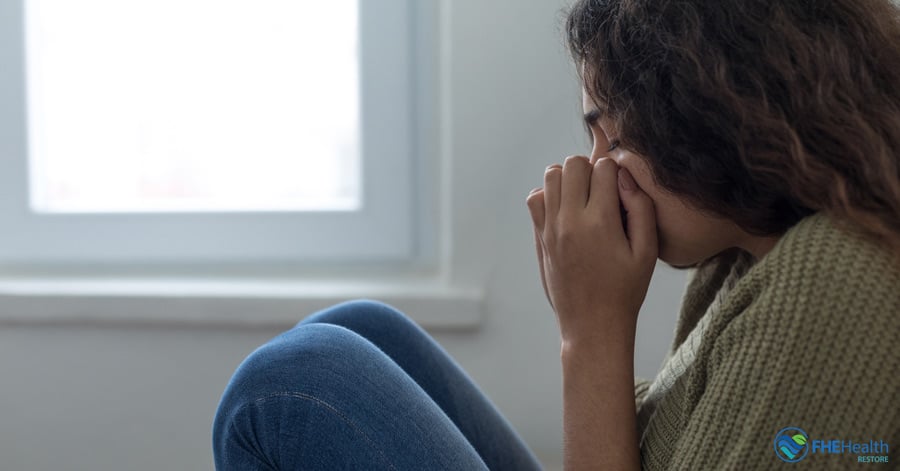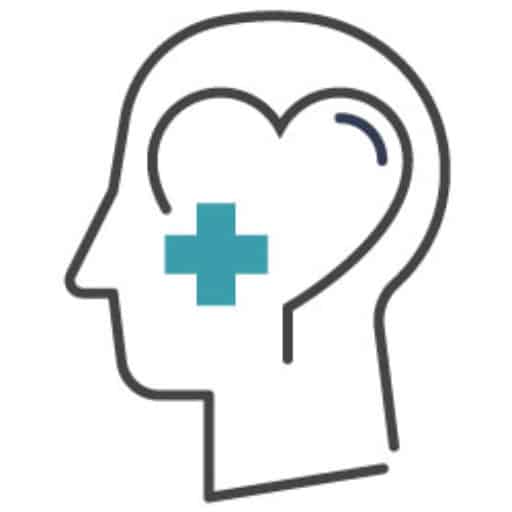Updated June 12, 2023
You feel your heart pounding. Maybe your palms feel sweaty or you’re clenching your fists or gritting your teeth. Sweat might start pouring down your face, or you might feel pressure in your chest.
All of these can be a description of a panic attack. Anxiety is a silent problem that can have very real, very immediate effects. From sudden mood swings that involve lashing out in irritation or anger to a sudden need to run to the bathroom, the signs of anxiety are there.
When every day is a silent battle against endless triggers, it can be overwhelming and terrifying. Trying to explain what it’s like to have a panic attack can be anxiety-inducing all on its own. With a better understanding of what anxiety is and a panic attack description, you can better help and support your loved ones experiencing anxiety.
Types of Anxiety
Anxiety is a broad term, and everyone has anxious moments. Discomfort with public speaking or avoiding activities that may cause internal embarrassment are all relatively normal responses to situations that cause many people to feel anxious.
With anxiety disorders, the anxiety can take on a life of its own, restricting daily activities and making life more difficult for the person with the condition. Five types of anxiety disorders are the most common, and each has a unique path of treatment. Since more than 19% of American adults have anxiety disorders, it’s a good idea to learn to recognize the basics and what may be helpful for each type.
Generalized Anxiety Disorder (GAD)
One of the more common anxiety diagnoses, GAD often presents as worrying excessively about everyday things. For example, a person with GAD might have intrusive thoughts about getting in a car accident before driving, even in an area without other traffic. Worrying about the death of a child or significant other might also be an indication of GAD if there’s no particular reason these worries should take up so much immediate attention.
Social Anxiety Disorder
People with social anxiety disorder often have a hard time interacting in public or in other social situations. Depending on the severity of the disorder, socially anxious people may struggle with daily activities like going to the grocery store or attending work meetings.
Obsessive-Compulsive Disorder (OCD)
Obsessive-compulsive disorder often presents as ritualistic behaviors in an attempt to prevent unspecified bad things. Someone with OCD may routinely wash their hands or turn light switches on and off a set number of times. Interruptions to daily rituals can create very negative feelings. OCD is one expression of an anxiety disorder, since the motivating force behind obsessive behaviors is anxiety.
Panic Disorder
While those with GAD may also have panic disorder, the two are distinctly different. Those with panic disorder may experience regular and frequent panic attacks, sometimes daily or more than once a week.
Feelings of terror, difficulty breathing and panic about your health are all common when in the midst of a panic attack. Unfortunately, the physical symptoms of a panic attack can worsen the anxiety that originally triggers the attack, creating a negative spiral.
Post-Traumatic Stress Disorder (PTSD)
PTSD is often triggered by unusual events that leave behind unresolved trauma. Prolonged high levels of stress can lead to PTSD, which is why it’s often associated with high-stress positions such as military service, emergency medical personnel and victims of abuse. People with PTSD may have repeating cycles where they relive the trauma in flashbacks or nightmares. PTSD is often accompanied by depression and angry outbursts.
A Description of a Panic Attack
Everyone deals with their anxiety differently. Silent panic attacks may not have many outward symptoms but can feel devastating.
How to describe a panic attack? You might notice a tingling in your limbs or feel dizzy when one begins. You may start to disassociate or notice your heart rate increasing. In general, all panic attacks come with a sense of danger, a rapid heartbeat and fearing loss of control or death.
If you can’t get your panic under control, you might need a trip to the ER. Many of the symptoms can overlap between panic attacks and heart attacks, so it may be best to get checked if you notice prolonged or repetitive attacks.
Coping mechanisms often help anxious people complete important tasks, even while struggling with the symptoms of a panic attack. Those with social anxiety might avoid parties and choose shopping times free from crowds. Someone with OCD might take a picture of their locked front door to avoid a sudden trip home to check on it.
While these coping mechanisms can be helpful, they’re not always effective. Many of these coping mechanisms are instinctive attempts to bring anxiety under control before seeking professional help.
If you have a loved one struggling with anxiety, offering support might be as simple as installing smart devices to allow remote control or going along on shopping trips. The more you know about the specific type of panic disorder, the more support you can provide.
The Mechanisms of a Panic Attack
As strange as it may sound, most experts believe that a panic attack stems from your body attempting to protect itself. When you are in danger, your brain immediately triggers a cascade of effects that we often call the “fight-or-flight” response. Within your brain is the hypothalamus. Think of this as the command center for many of your body’s functions. The hypothalamus uses the autonomic nervous system to control things like your heartbeat, blood pressure, and even breathing.
When the brain perceives a situation as dangerous, the hypothalamus triggers the autonomic nervous system, releasing a flood of hormones—like adrenaline—that prime your body for survival. This comes with some serious physiological changes, like increased heart rate, widened blood vessels, and accelerated breathing. If you were in real danger, this would be extremely useful.
Sometimes, though, the brain will activate “fight-or-flight” mode in the absence of real danger, which is what happens with anxiety disorders. The result may be a feeling of being “on edge” or in some cases a full-fledged panic attack.
Some scientists have taken their research further and found links between both anxiety and panic attacks and the amygdala—the part of the brain that manages fear and other emotions. What they’ve found is that some people are genetically prone to seeing things as dangerous, even when they’re not.
How to Manage a Panic Attack
There is no substitute for professional help when it comes to managing issues like anxiety disorders. That being said, it can be extremely helpful to know how to cope with a panic attack when one suddenly occurs.
Most people’s first instinct when it comes to panic attacks is to tell themselves to “relax” or “calm down.” This self-talk can have the opposite effect, however, by drawing their attention to the unsettling symptoms they’re experiencing.
Instead, it’s better to accept and acknowledge that you’re having a panic attack and remind yourself that you are not in danger. The symptoms are uncomfortable and scary but are not life-threatening. If you’ve had a panic attack before, tell yourself that you’ve had these feelings before and were fine afterward.
Many people find that focusing on something beyond the panic attack helps ground them. Some of the more common methods for doing this are reciting your favorite lyrics, counting down from 100 in different number patterns, or trying to recognize various sights and sounds around you.
Living With Anxiety
You probably know at least one person with an anxiety disorder, but you may never realize it. Some people are high-functioning and work through their anxiety, while others have progressed well in treatment and use a variety of tools to help mitigate the symptoms of their anxiety.
Medication-assisted treatment can be very helpful in controlling panic attacks and reducing the instance and duration of an attack. Panic attacks can last for a few minutes or an hour or longer, but most are between 5-20 minutes long.
With antianxiety medication and counseling, many people with anxiety can recover well and get back to normal daily life. While treatment may not eliminate panic attacks, it can help those with an anxiety disorder relax when symptoms present and recognize that the anxiety isn’t going to cause permanent harm, helping to reduce severity.
A Better Life Is Possible
At Restore Mental Health, we can help you gain control over your intrusive thoughts and sudden fear through a combination of methods that may include medication, counseling, CBT and exposure therapy.
If your anxiety is keeping you locked in the house or interfering with activities you used to enjoy, contact us today to take the first step towards recovery.



